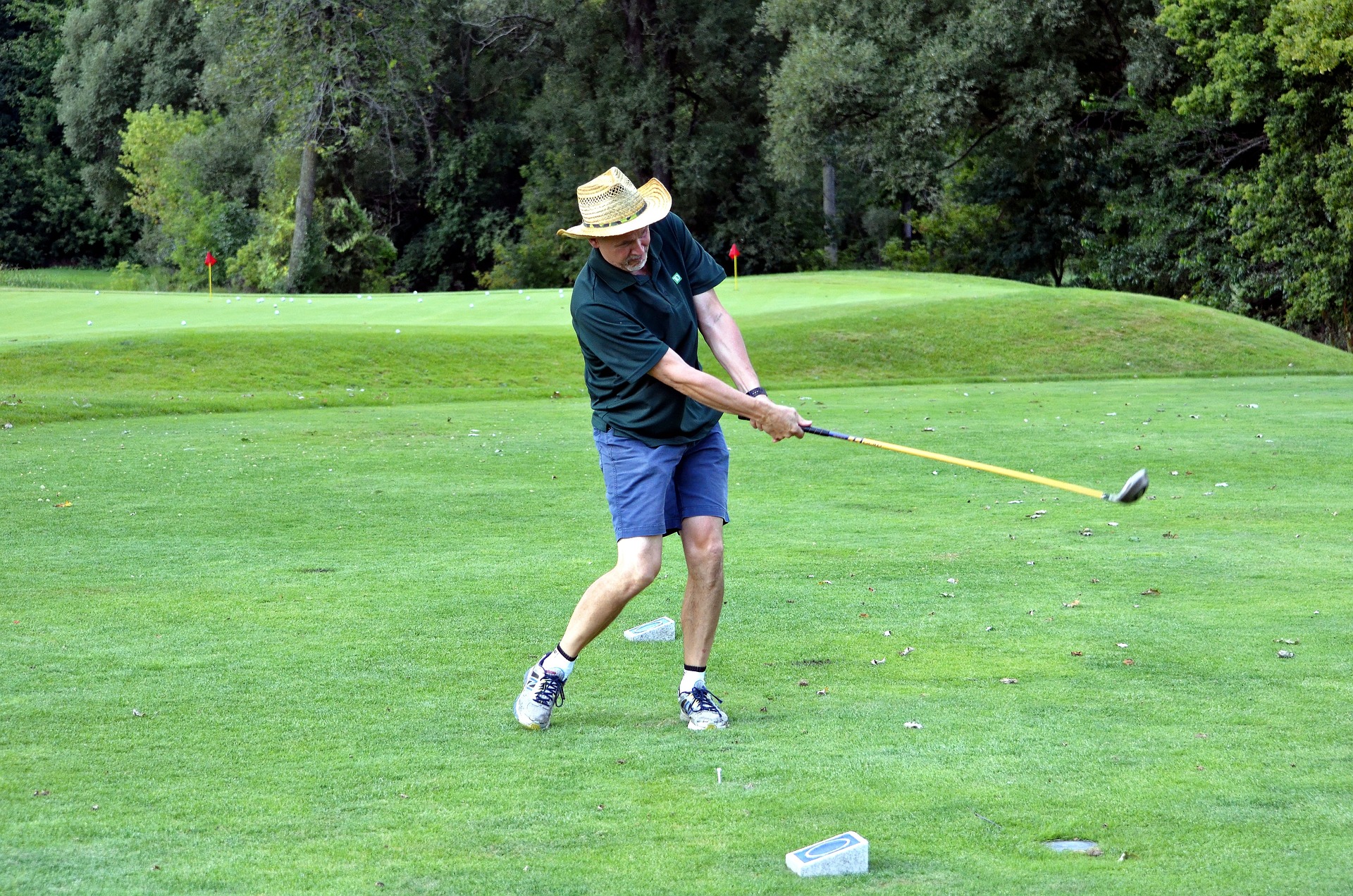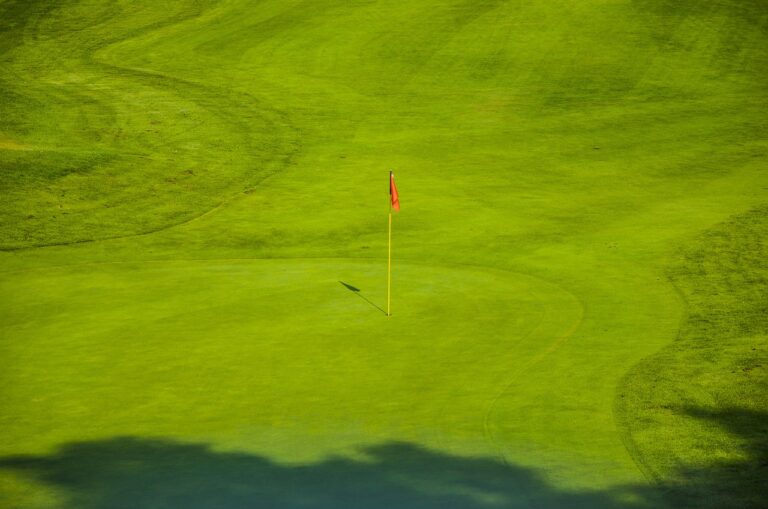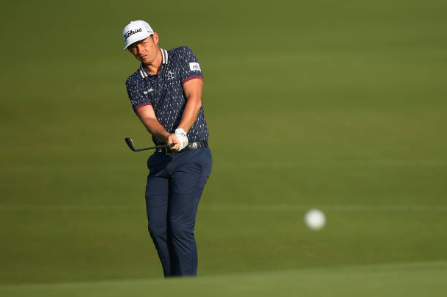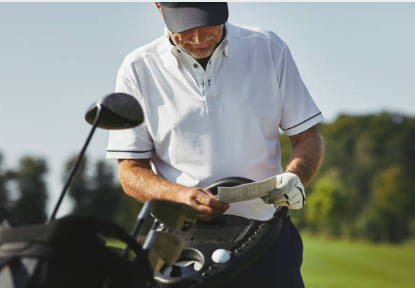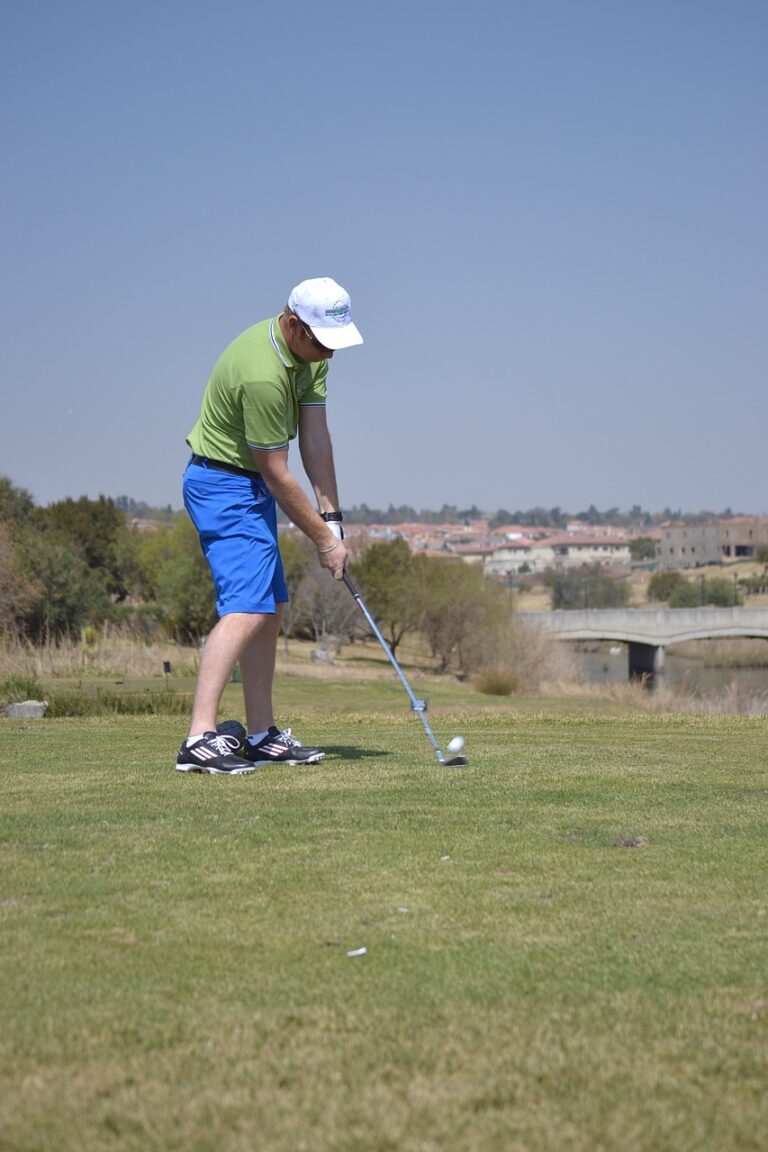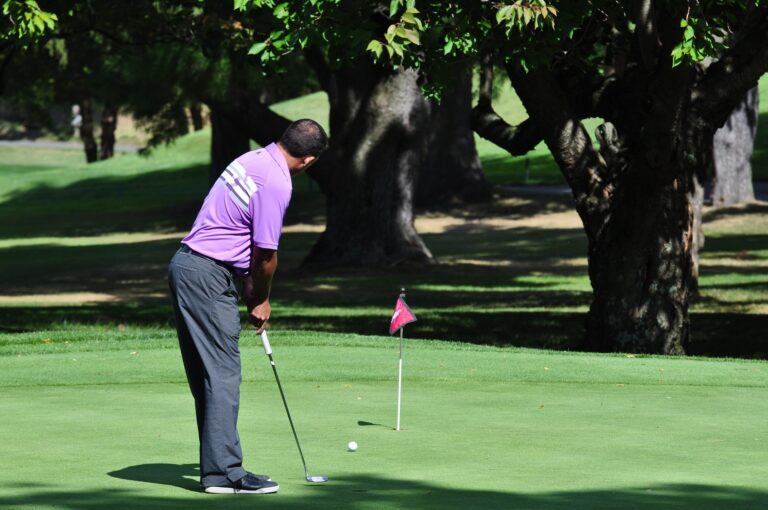How to hit a fade in golf.
Hi folks, in this post, I will be sharing some helpful insights on how to hit a fade in golf.
Golfers often strive to master the art of hitting a fade, a shot that curves slightly from left to right (for right-handed players) and is often used to navigate around obstacles or to land softly on the green.
While many golfers may find it challenging to hit a fade consistently, with the right technique, it can be a valuable shot to have in one’s arsenal.
To hit a fade, golfers must first understand the mechanics behind it. Unlike a draw, which curves from right to left, a fade requires a more open clubface at impact and a swing path that is slightly out-to-in.
By positioning the ball forward in the stance and aiming the clubface slightly left of the target, golfers can create the necessary conditions for a fade.
While hitting a fade may seem daunting at first, with practice and patience, golfers can learn to master this shot and add it to their repertoire.
In the following sections, we will explore the key steps and techniques involved in hitting a fade, as well as some common mistakes to avoid.
By following these tips and putting in the necessary practice, golfers can improve their game and take their skills to the next level.
Understanding the Fade.
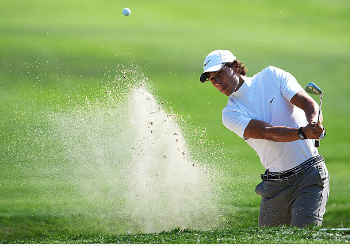
What is a Fade?
A fade is a type of golf shot that curves slightly from left to right (for a right-handed golfer). It is the opposite of a draw, which curves from right to left. A fade is a controlled shot that can be used to navigate around obstacles, such as trees or bunkers, or to hold the ball against a crosswind.
To hit a fade, a golfer needs to open the clubface relative to the target line, which causes the ball to spin with sidespin to the right. The golfer also needs to swing slightly from outside to inside, which further enhances the right-to-left movement of the ball.
Why Hit a Fade?
There are several reasons why a golfer might choose to hit a fade:
- To Navigate Obstacles: Hitting a fade can help a golfer navigate around obstacles, such as trees or bunkers, that are in the way of the target line. By curving the ball slightly from left to right, the golfer can avoid the obstacle and still reach the target.
- To Hold Against a Crosswind: When there is a strong crosswind blowing from left to right (for a right-handed golfer), hitting a fade can help the golfer hold the ball against the wind and keep it on the target line. By curving the ball slightly from left to right, the golfer can counteract the wind and keep the ball from drifting too far right.
- To Control Distance: A fade can also be used to control the distance of a shot. By hitting a fade with a shorter club, a golfer can reduce the amount of backspin on the ball, which will cause it to roll out further on the ground. This can be useful when trying to hit a shot that lands softly and stops quickly on the green.
By and large, a fade is a controlled shot that can be used to navigate obstacles, hold against a crosswind, or control distance. To hit a fade, a golfer needs to open the clubface relative to the target line and swing slightly from outside to inside.
Fundamentals of the Fade.
Understanding the fundamentals of hitting a fade in golf is essential for players looking to improve their shot-shaping abilities.
Mastering the basic principles of this shot, you’ll be able to manipulate the ball’s trajectory and better navigate the course.
Let’s break down the key components of the fade, from setup to execution.
Grip and Clubface
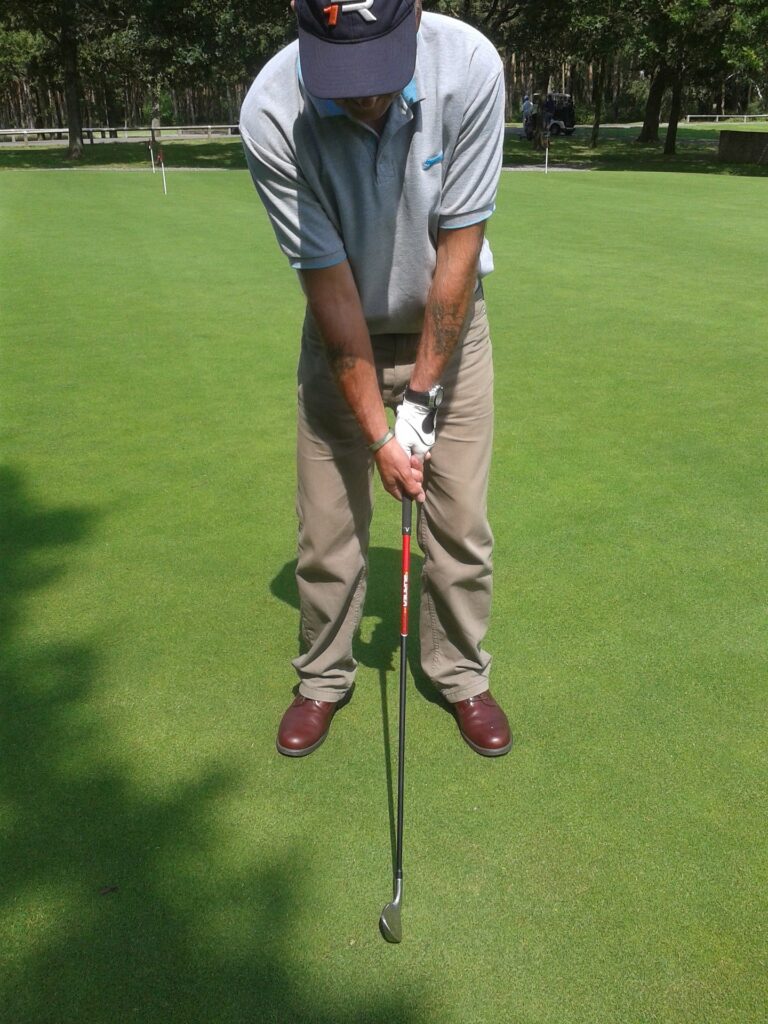
To hit a successful fade, you’ll need to adjust your grip and clubface. Weaker grip pressure and a slightly open clubface at address are crucial for promoting the desired left-to-right ball flight (for right-handed golfers). This open clubface will help produce the necessary sidespin for a controlled fade.
Stance and Alignment.
Setting up with an open stance is another fundamental aspect of hitting a fade. Align your feet, hips, and shoulders slightly left of your target (for right-handed golfers) while maintaining your clubface aimed at the target.
This open alignment will encourage an outside-to-in swing path, which is necessary for producing a fade.
Swing Path.
A proper swing path is essential for hitting a fade. Focus on maintaining an outside-to-in swing path, with the clubhead moving from outside the target line to inside during the downswing. This swing path, combined with an open clubface, will generate the sidespin needed to create a controlled fade.
Tempo and Rhythm.
Maintaining a smooth tempo and rhythm throughout your swing is crucial for hitting a consistent fade. Over-swinging or rushing your swing can result in a loss of control, making it difficult to achieve the desired ball flight. Focus on staying relaxed and keeping your swing smooth from start to finish.
Visualization and Commitment.
Visualizing your shot before you execute it can be extremely helpful when trying to hit a fade. Picture the ball’s trajectory and landing spot in your mind, and commit fully to the shot. Confidence in your ability to execute the fade is key to producing the desired result.
By mastering these fundamentals of hitting a fade, you’ll be well-equipped to shape your shots on the course, giving you more control over your ball flight and ultimately improving your overall game. Keep practicing and refining your technique, and soon you’ll be hitting fades with confidence and precision.
How to hit a fade in golf – Swing Techniques for the Fade.
Mastering the fade—a golf shot with a controlled left-to-right ball flight (for right-handed golfers)—requires attention to specific swing techniques. By focusing on these techniques, you’ll be able to hit a consistent and accurate fade, enhancing your shot-shaping skills. Let’s dive into the key swing techniques needed for hitting a fade.
1. Adjust Your Grip.
To maintain an open clubface at impact—essential for hitting a fade—use a slightly weaker grip than your standard one. Rotate your hands counterclockwise on the club (for right-handed golfers) so that you see fewer knuckles on your lead hand at address.
2. Open Your Stance.
Set up with an open stance by aligning your feet, hips, and shoulders slightly left of your target (for right-handed golfers). This open alignment encourages an outside-to-in swing path, which is necessary for producing a fade.
3. Position the Ball Forward in Your Stance.
Place the ball slightly forward in your stance, closer to your front foot. This ball position helps promote a higher launch angle and a more open clubface at impact, both of which contribute to hitting a fade.
4. Maintain a Smooth Tempo.
A smooth and consistent tempo is crucial for hitting a fade. Over-swinging or rushing your swing can result in a loss of control and accuracy. Focus on staying relaxed and keeping your swing smooth from start to finish.
5. Execute an Outside-to-In Swing Path.
During your swing, maintain an outside-to-in swing path, with the clubhead moving from outside the target line to inside during the downswing. This swing path, combined with an open clubface, generates the sidespin needed to create a controlled fade.
6. Keep the Clubface Open Through Impact.
As you approach impact, ensure that your clubface remains open relative to your swing path. This open clubface will produce the necessary sidespin for a gentle left-to-right ball flight (for right-handed golfers).
7. High, Relaxed Follow-Through.
Finish your swing with a high, relaxed follow-through, allowing the club to naturally curve around your body. This follow-through helps maintain the open clubface and outside-to-in swing path needed for a fade.
Concentrating on these swing techniques, you’ll be well on your way to mastering the art of the fade.
Remember that hitting a consistent fade requires practice and patience. Keep refining your technique, and soon you’ll be shaping your shots like a pro, giving you more control over your ball flight and ultimately improving your overall game.
Practice Drills for the Fade.
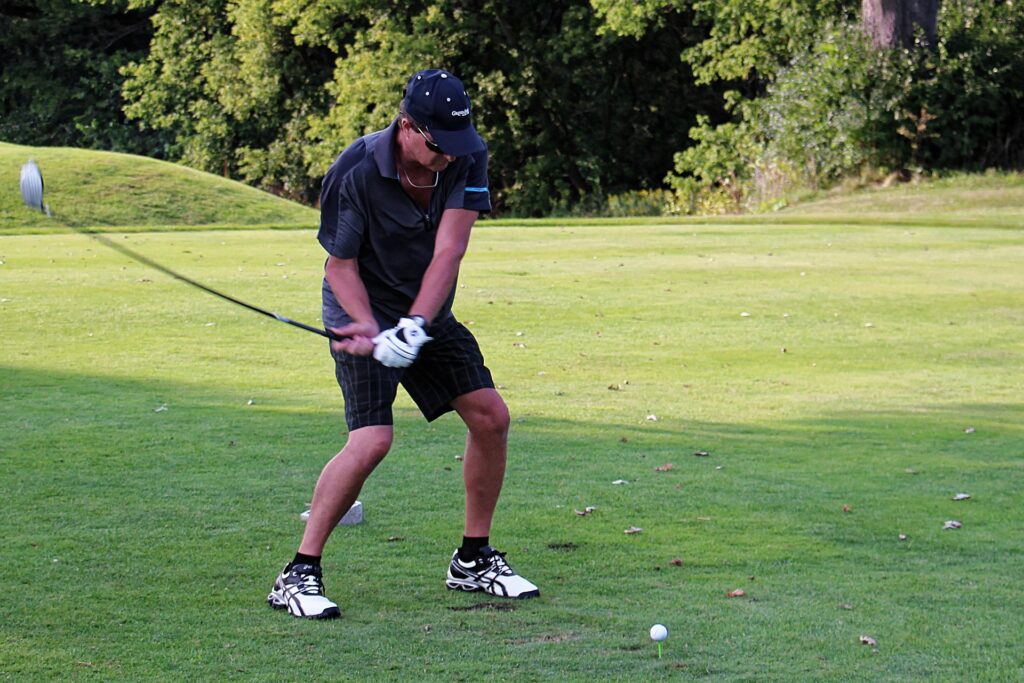
To consistently hit a fade—a golf shot with a controlled left-to-right ball flight (for right-handed golfers)—it’s crucial to practice and perfect your swing techniques.
Implementing specific drills in your practice routine will help you master the art of the fade, allowing you to shape your shots effectively on the course. Here are some valuable practice drills for hitting a fade:
1. Alignment Stick Drill.
Place an alignment stick on the ground, pointing slightly left of your target (for right-handed golfers). This will help you visualize and maintain the correct outside-to-in swing path necessary for hitting a fade.
Focus on swinging the club along the alignment stick’s path during your practice swings.
2. Clubface Control Drill.
This drill focuses on maintaining an open clubface through impact. Address the ball and take a half-swing, stopping at the halfway point of your follow-through.
Check to ensure that the clubface remains open and pointing to the right of your target (for right-handed golfers). Repeat this drill to develop muscle memory and clubface control.
3. Tee Gate Drill.
Set up two tees in the ground, one directly behind the ball and the other about 4-6 inches in front of the ball, with a small gap between them.
The tees should be angled slightly to the left (for right-handed golfers) to represent the ideal swing path for a fade.
Practice swinging the club through the tees, focusing on maintaining an outside-to-in swing path without hitting the tees.
4. One-handed Swing Drill.
Using just your lead hand (left hand for right-handed golfers), grip the club and take practice swings, focusing on maintaining a smooth tempo and an outside-to-in swing path.
This drill helps develop a feeling of control and finesse in your swing, which is essential for hitting a fade.
5. Impact Bag Drill.
An impact bag is a training aid designed to help you feel the correct impact position for various shots.
To practice hitting a fade, set up an impact bag slightly left of your target (for right-handed golfers). Swing the club into the bag, ensuring that the clubface remains open and the swing path is outside-to-in.
This drill helps reinforce the proper impact position for hitting a fade.
6. Golf Ball Tracer Drill.
Using a dry erase marker, draw a straight line on your golf ball, representing the target line. Set up with the line pointing slightly left of your target (for right-handed golfers).
As you strike the ball, the line should create a visual tracer of the desired left-to-right ball flight. Analyze the ball’s flight and make adjustments to your swing as needed.
Incorporate these practice drills into your training routine to develop the skills and muscle memory necessary for hitting a consistent and accurate fade. With dedication and persistence, you’ll be able to shape your shots effectively on the golf course, giving you more control over your ball flight and ultimately improving your overall game.
Common Mistakes to Avoid When Hitting a Fade.
Hitting a controlled fade—a golf shot with a gentle left-to-right ball flight (for right-handed golfers)—requires attention to detail and a solid understanding of swing mechanics.
However, golfers can sometimes fall into some common mistakes that can negatively impact their fade shots. In this section, we’ll discuss these common mistakes and how to avoid them to ensure consistent and accurate fades.
1. Over-gripping the Club.
Gripping the club too tightly can lead to tension in your hands, wrists, and forearms, making it difficult to maintain a smooth and controlled swing. Relax your grip and allow your hands to work naturally throughout the swing, which will help promote an open clubface and a controlled fade.
2. Inadequate Setup and Alignment.
Proper setup and alignment are crucial for hitting a fade. Failing to set up with an open stance or not aligning your body correctly can result in a poor swing path and an incorrect ball flight.
Focus on setting up with your feet, hips, and shoulders slightly left of your target (for right-handed golfers) and positioning the ball forward in your stance.
3. Swinging Too Hard.
Trying to generate too much power by swinging too hard can lead to a loss of control and inconsistency in your fade shots. Maintain a smooth tempo and avoid over-swinging to ensure a controlled ball flight and better accuracy.
4. Closing the Clubface at Impact.
A common mistake golfers make when trying to hit a fade is closing the clubface at impact, which can result in a straight shot or even a draw instead of the desired fade. Focus on keeping the clubface open relative to your swing path through impact, which will help generate the necessary sidespin for a controlled fade.
5. Failing to Commit to the Shot.
Confidence and commitment are essential when attempting to hit a fade. Hesitation or doubt in your swing can lead to inconsistent results. Visualize the shot, trust your swing mechanics, and fully commit to the shot for the best possible outcome.
6. Not Practicing Enough.
Hitting a consistent fade requires practice and patience. Neglecting to practice the shot regularly can result in a lack of confidence and inconsistent execution on the course.
Dedicate time to practicing your fade, focusing on your swing techniques and using drills to reinforce proper mechanics.
Being aware of these common mistakes and taking steps to avoid them, you’ll be better equipped to hit consistent and accurate fades on the golf course.
Remember, practice and patience are key to mastering any golf shot, and the fade is no exception. Keep refining your technique, and soon you’ll be shaping your shots like a pro
Draw VS Fade.
In the game of golf, being able to shape your shots is a valuable skill that can help you navigate the course more effectively. Two common shot shapes that golfers use are the draw and the fade.
Understanding the differences between these two shots and knowing when to use each one can greatly improve your game. In this section, we’ll discuss the key differences between a draw and a fade, as well as their respective advantages.
The Draw.
A draw is a golf shot that starts to the right of the target and gently curves back to the left (for right-handed golfers). This left-to-right ball flight is typically achieved by using an inside-to-out swing path and a closed clubface at impact. Some characteristics of the draw include:
- Lower trajectory: Draws generally have a lower, more penetrating ball flight compared to fades.
- Increased distance: Due to the lower trajectory and reduced backspin, draws often result in greater overall distance.
- Roll: Draws tend to produce more roll after landing, which can be advantageous on firm fairways.
- Suitable for right-to-left holes: Draws are useful for navigating right-to-left doglegs or avoiding obstacles on the right side of the fairway.
The Fade.
A fade, on the other hand, is a golf shot that starts to the left of the target and gently curves back to the right (for right-handed golfers). This right-to-left ball flight is achieved by using an outside-to-in swing path and an open clubface at impact. Some characteristics of the fade include:
- Higher trajectory: Fades generally have a higher, softer ball flight compared to draws.
- More control: Fades are often considered easier to control due to their higher trajectory and softer landing.
- Less roll: Fades tend to produce less roll after landing, which can be advantageous on fast or undulating greens.
- Suitable for left-to-right holes: Fades are useful for navigating left-to-right doglegs or avoiding obstacles on the left side of the fairway.
Which Shot to Choose: Draw or Fade?
Both the draw and the fade have their own set of advantages, and choosing the right shot depends on the specific situation you face on the course.
Consider factors such as the hole layout, wind conditions, and pin placements when deciding which shot shape to use.
In general, opt for a draw when you need more distance, when playing into the wind, or when navigating a right-to-left hole. Choose a fade when you require more control, want a softer landing, or when playing a left-to-right hole.
By understanding the differences between a draw and a fade, and knowing when to utilize each shot, you’ll be better equipped to navigate the golf course and improve your overall performance.
Conclusion.
Mastering the art of hitting a fade is an invaluable skill for golfers looking to enhance their shot-shaping abilities and gain better control over their ball flight. By focusing on the essential swing techniques, practicing effective drills, and avoiding common mistakes, you can consistently hit a controlled and accurate fade, giving you a significant advantage on the golf course.
Remember that hitting a consistent fade requires patience, practice, and commitment to refining your swing mechanics. By dedicating time to perfecting your fade, you’ll be well on your way to shaping your shots like a pro and improving your overall game.
Embrace the challenge of learning how to hit a fade in golf and apply the knowledge shared in this article to elevate your golfing skills. With perseverance and dedication, you’ll be able to navigate even the most challenging courses with ease and confidence, all while enjoying the satisfaction of executing well-crafted shots.

